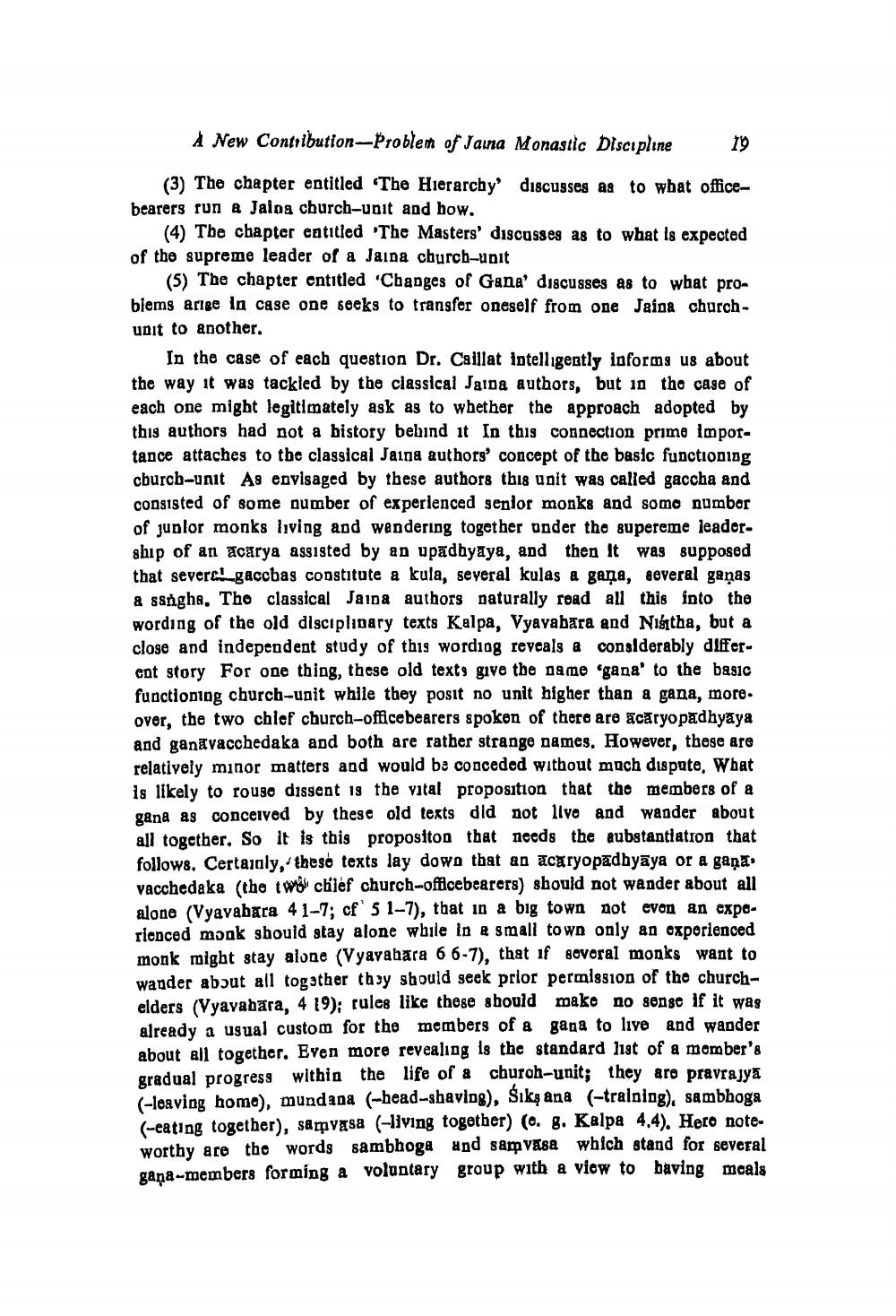________________
A New Contribution--Problem of Jaina Monastic Discipline 19 (3) The chapter entitled "The Hierarchy' discusses as to what officebearers run a Jaios church-unit and how.
(4) The chapter entitled 'The Masters' discusses as to what is expected of the supreme leader of a Jaina church-unit
(5) The chapter entitled 'Changes of Gana' discusses as to what problems arige in case one seeks to transfer oneself from one Jaina churchunit to another.
In the case of each question Dr. Caillat intelligently inform us about the way it was tackled by the classical Jaida authors, but in the case of each one might legitimately ask as to whether the approach adopted by this authors had not a bistory behind it In this connection prime importance attaches to the classical Jaina authors' concept of the basic functioning cburcb-unt Ag envisaged by these authors this unit was called gaccha and consisted of some number of experienced senior monks and some number of juolor monks living and wandering together onder the supereme leadership of an acarya assisted by an upadhyaya, and then It was supposed that severch gacobas constitute a kula, several kulas a gana, several ganas & sanghe, The classical Jaina authors naturally read all this into the wording of the old disciplinary texts Kalpa, Vyavabara and Nigtha, but a close and independent study of this wording reveals a considerably different story For one thing, these old texts give the name “gana' to the basic functioniog church--unit while they posit no unit higher than a gana, more. over, the two chief church-officebearers spoken of there are acaryopadhyaya and ganavacchedaka and both are rather strange names. However, these are relatively minor matters and would be conceded without much dispute, What is likely to rouso dissent is the vital proposition that the members of a gana as conceived by these old texts did not live and wander about all together, So it is this propositon that needs the aubstantiation that follows. Certainly, these texts lay dowo that an acaryopadhyāya or a gana. vacchedaka (the two chilef church-officebearers) should not wander about all alone (Vyavabara 41-7; cf' 51-7), that in a big town not even an exporienced monk should stay alone while in a small town only an experienced monk might stay alone (Vyavahara 6 6-7), that if soveral monks want to wander about all togsther thy should seek prior permission of the churchelders (Vyavabara, 4 19): rules like these should make no sense if it was already a usual custom for the members of a gana to live and wander about all together. Even more revealing is the standard list of a momber's gradual progress within the life of a church-unit; they are pravrajya (-leaving homo), mundana (-head-shaving), Sikş ana (-training), sambhoga (-eating together), samvxsa (-living together) (c. 8. Kalpa 4.4). Hero note worthy ace the words sambhoga and sam Vasa which stand for several gana-members forming a voluntary group with a view to having meals




